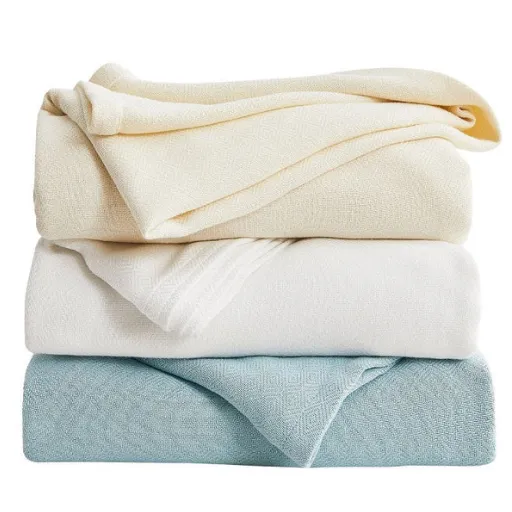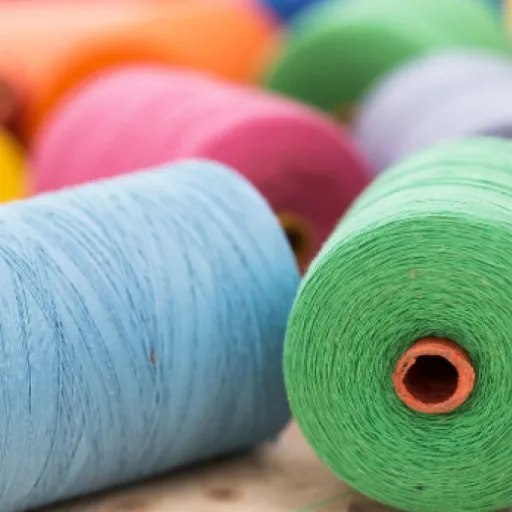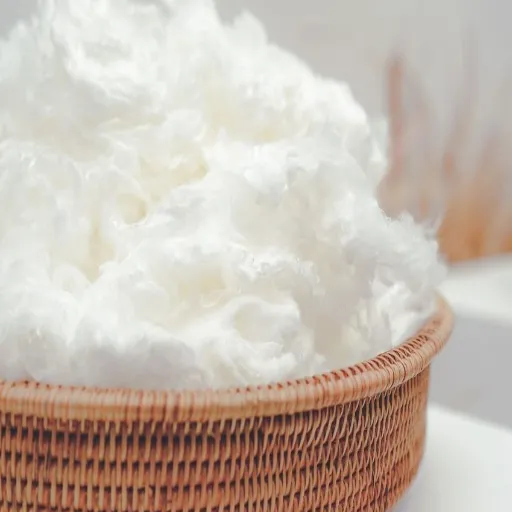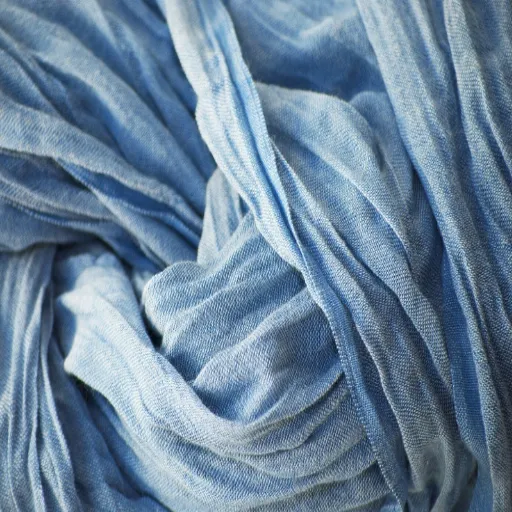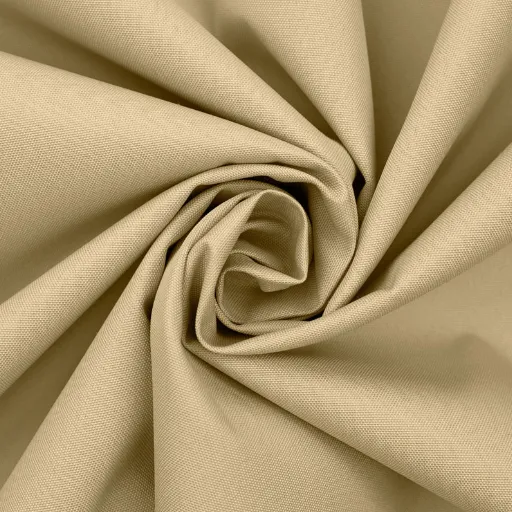When discussing synthetic textiles, acrylic and nylon are often the two fabric options that are very popular in the market, yet they create doubts in consumers’ minds about which one is best for their needs. Not only do these fabrics share similarities as man-made materials, but they also have their own characteristics, allowing them to cater to different applications. If you know the differences between acrylic and nylon fabrics, you can avoid guessing and make well-informed choices, whether your fabric is for clothing, upholstery, or gear for outdoor use. This article takes you through each fabric’s features, benefits, and downsides to provide a thorough comparison that leads your decision. Stay tuned to learn about the durability, texture, maintenance, and versatility aspects of the two fabrics, and how they compare with each other.
Durability

In terms of long-lasting wear and tear, acrylic is not as durable as nylon. Nylon is often referred to as a powerful and tough fiber, which is the reason why its applications include outdoor items and heavy-use products. Acrylic, on the other hand, is strong enough for many daily uses but tends to pill and wear off more quickly under continuous rubbing or stress. If durability is the most critical factor, then nylon should be the choice.
| Feature | Acrylic | Nylon |
|---|---|---|
| Durability | Moderate – Pills and wears quickly | High – Powerful and tough |
| Weight | Very lightweight | Lightweight |
| UV Resistance | Excellent | Low |
| Heat Resistance | Low | Moderate to High |
| Moisture Absorption | Poor | Hygroscopic (absorbs moisture) |
| Cost | Lower – More economical | Higher – Premium pricing |
| Recyclability | Difficult – Limited facilities | Better – More recyclable |
Strengths and Weaknesses of Acrylic
Acrylic is known for its numerous positives, which is why it is highly considered for a variety of uses. Its main benefit is that it is very light, making it easy to manage and transport. Furthermore, it is very good at resisting UV rays, which is why it is used in outdoor places where it is less likely to fade or decay over the years. Besides, the plastic is very adaptable, available in many different colors and finishes, and can also resemble an expensive material like glass, all at a very low cost.
✓ Advantages
- Very lightweight for easy handling and transport
- Excellent UV resistance prevents fading and decay
- Highly versatile with many colors and finishes available
- It can resemble expensive materials like glass
- Cost-effective and affordable
✗ Disadvantages
- Not as tough as nylon or polycarbonate
- May crack or break under high-stress situations
- Vulnerable to scratching with constant contact
- Low heat resistance limits high-temperature applications
So, a clear understanding of the pros and cons of the material will help in making the right decision about its application, determining where to use it, and identifying where other materials can perform better.
Strengths and Weaknesses of Nylon
Nylon, being a highly versatile and durable synthetic polymer, is one of the most widely used modern materials. Its high-tensile strength trait is one of the most significant advantages, making it ideal for applications that require strong and long-lasting materials. Additionally, it has excellent elasticity, can withstand wear, and is resistant to chemicals, thus becoming the first choice in many industries, including textiles, automotive, and industrial manufacturing.
✓ Advantages
- High-tensile strength for demanding applications
- Excellent elasticity and flexibility
- Superior wear resistance
- Chemical-resistant properties
- Widely used across multiple industries
✗ Disadvantages
- Hygroscopic – absorbs moisture from the surrounding air
- Size and mechanical properties can change in high humidity
- Low resistance to UV rays
- Can be damaged by prolonged direct sunlight exposure
Nonetheless, nylon’s exceptional mix of characteristics, such as strength, flexibility, and versatility, continues to make the material very useful in many areas, including the ones mentioned above.
Cost Analysis
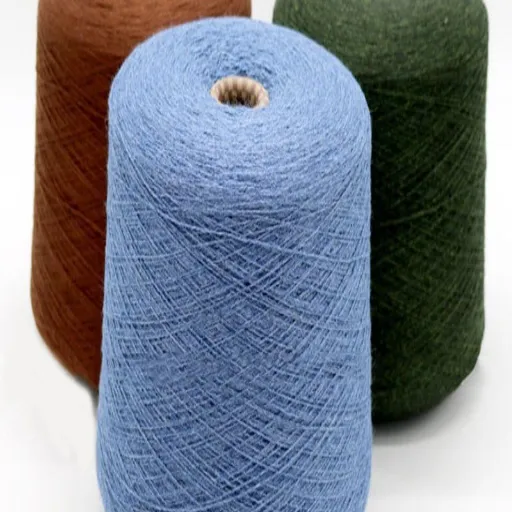
When compared in terms of cost, acrylic is usually the cheaper option than nylon. The economic advantage of acrylic is attributed to its lower production costs and availability in large quantities. Nylon, in contrast, is usually more expensive because of its more complex production process and superior mechanical properties. The market often views nylon as a stronger and more durable material; however, its price can be a critical issue, especially for applications sensitive to costs. The decision between the two materials is usually a matter of intended use, performance requirements, and budget constraints.
Cost-Effectiveness of Acrylic
Acrylic has gained a reputation as a cheap alternative to other materials, which is the main reason for its popularity in many industries. Its production method is not very complicated, thus it can be manufactured at lower costs than nylon or polycarbonate, for example. Furthermore, acrylic’s properties, such as being lightweight and resistant to breaking, are fundamental, especially in the areas of signage, windows, and display cases, where the material is mainly used. With consumers and industries supporting acrylic because it is reasonably priced and versatile, that is the latest information. With its price advantage, acrylic will undoubtedly continue to be one of the most widely used materials for its aesthetic and durability properties.
Cost Considerations for Nylon
Nylon is a synthetic polymer that is usually associated with long-lasting, flexible, and economical characteristics. Recent statistics indicate that the price of nylon is primarily affected by its quality and intended application. Industrial-grade nylon is usually cheaper, making it a good pick for items produced in bulk, like plastic clips and machine parts. In contrast, super-specialty nylons with properties like fireproofing or high-temperature resistance can be more costly due to the sophisticated production techniques used. Moreover, the cost of raw materials like crude oil has a considerable effect on the price of noodles, as these materials are petroleum-based. Nevertheless, through all these factors, nylon remains a preferred material due to its good price-quality ratio and its ability to last long and perform uniformly.
Environmental Impact
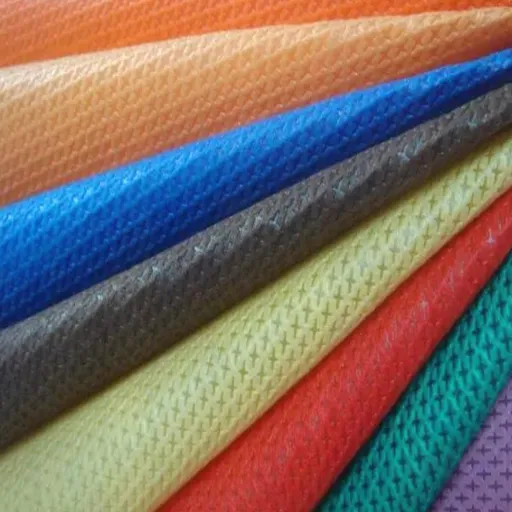
Acrylic and nylon are two materials whose industrial use has an evident and detrimental impact on the environment. When assessing their drawbacks, one can see that nylon and acrylic each have two primary concerns. The production of nylon requires a lot of energy, is made from petroleum, and thus, contributes to very high emissions of greenhouse gases. But on the other hand, nylon is a strong material, and it is also recycled, which can result in a longer lifespan when the recycling process is managed correctly.
Unlike nylon, acrylic is entirely based on petroleum, but it is much less recyclable, and it emits microplastics during its lifetime. This is especially true when acrylic products are washed. Microplastics can then cause water pollution and interfere with aquatic life. Although both of these materials are somehow detrimental to the environment, nylon’s higher recyclability offers a slight advantage in terms of sustainability, provided that the recycling system is put in place.
Challenges of Acrylic Recycling
Recycling acrylic is a complex process due to the nature of its chemical composition and the current recycling infrastructure. Acrylic (also known as polymethyl methacrylate or PMMA) is not as standard as PET or HDPE plastics, which require specialized processes for recycling. The lack of sufficient facilities to manage acrylic results in a considerable amount ending up in landfills instead of being converted into a new product. Plus, acrylic is easily damaged in the standard recycling processes, which affects the quality and usability of the reclaimed substance. To tackle this issue, chemical recycling technologies are being improved to break acrylic down into its basic monomers, making it suitable for effective reuse. Still, these methods are costly and not fully developed, which limits their application on a large scale.
Environmental Footprint of Nylon
Nylon, a synthetic polymer that is widely utilized in the textile and industrial sectors, has a considerable impact on the environment through its production and disposal. The nylon production process consumes a lot of energy and heavily relies on fossil fuels, leading to significant emissions of greenhouse gases. For example, recent reports stated that producing one ton of nylon could result in the release of up to 5 tons of CO2 equivalent emissions. Also, the production procedure might emit nitrous oxide, a potent greenhouse gas with a global warming potential far greater than that of carbon dioxide.
Moreover, the strength of nylon, which benefits manufacturers and end-users in preserving the product, is still one of the factors contributing to its environmental concerns. Thus, when disposed of, nylon will take centuries to completely break down, raising concerns about pollution in the far future. Microplastics released from washing nylon garments during their lifetime are yet another cause of concern, as these tiny particles eventually find their way into the oceans, causing harm to marine life. Solutions to the environmental issues posed by nylon include developing eco-friendly materials, increasing recycling efforts, and changing consumer behavior towards less harmful choices.
Common Uses and Applications
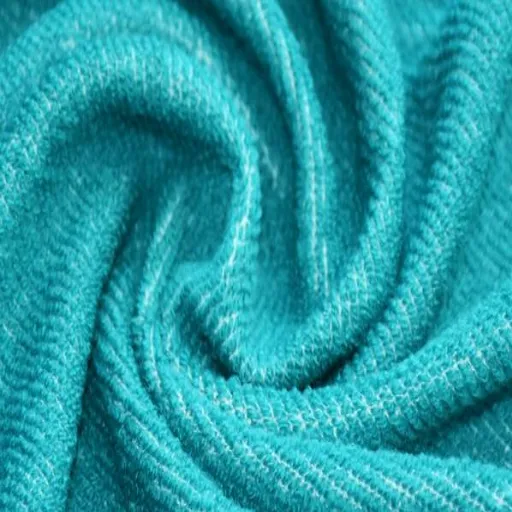
Acrylic and nylon are two synthetic materials that are extensively used, but their characteristics are the basis of their different applications. Acrylic is often chosen for the manufacture of sweaters, blankets, and upholstery because of its soft, wool-like texture and insulating properties. Additionally, it is a favored fabric for outdoor products due to its ability to withstand UV light and moisture. In contrast, nylon is favored for its toughness, stretchability, and lightness. It is a go-to material for activewear, socks, and bags, and it is still being used for industrial purposes like ropes and fishnets. The range of both materials is broad, but their specific uses depend on performance and functional requirements.
Best Applications for Acrylic
Acrylic has been a favorite among textile manufacturers and designers for creating products that require warmth, softness, and an attractive appearance. It is very much like wool; therefore, it is often used for woolen sweaters, scarves, blankets, and other items worn in winter. Besides this, acrylic is also used in the production of upholstery fabrics and home décor items due to its vivid dyeability, which also contributes to its resistance to fading. However, unlike nylon, which is predominantly used in very demanding cases for its super durability and elasticity, acrylic is instead employed where comfort and a luxurious feel are the main selling points. Although nylon is the king in activewear and industrial use, acrylic has remained a textile choice that is affordable, versatile, and overall feminine, thus balancing style with functionality.
Common Acrylic Applications:
- Winter clothing (sweaters, scarves)
- Blankets and throws
- Upholstery fabrics
- Home décor items
- Outdoor furniture fabrics
- Signage and display cases
Optimal Uses for Nylon
Nylon, a synthetic polymer with numerous applications, is celebrated for its strength, durability, and elasticity, which are the main reasons why it is still widely used in different industries. The textile industry primarily uses nylon for producing clothes, hosiery, and activewear due to its lightweight and moisture-wicking properties. Moreover, nylon is the material of choice for the production of ropes, fishing nets, and industrial cords since it can withstand significant amounts of pulling force. Its resistance to wear and chemical substances has also elevated nylon to a position where it is used for machine parts and car components. Nylon’s flexibility is further manifested in the manufacture of carpets, toothbrush bristles, and even kitchen utensils, which are consumer goods and demonstrate its rich usage in daily life.
Common Nylon Applications:
- Activewear and sportswear
- Hosiery and socks
- Bags and backpacks
- Ropes and fishing nets
- Industrial cords
- Automotive components
- Carpets and rugs
- Toothbrush bristles
- Kitchen utensils
Consumer Preferences
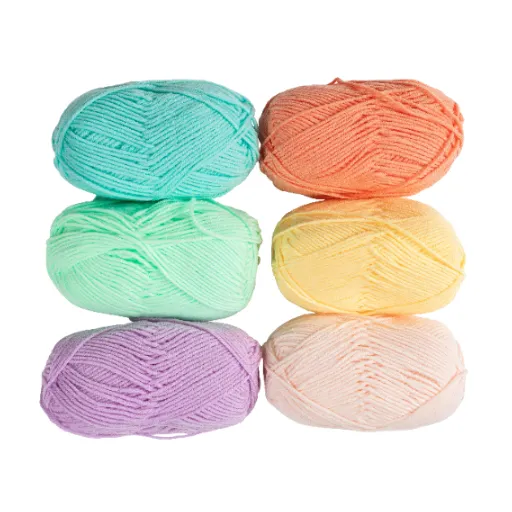
In the case of acrylic vs. nylon, the choice of the consumer largely depends on the application’s primary purpose and the materials’ significant properties. Among other things, acrylic is soft, warm, and has a wool-like texture, making it a favorite material for sweaters, blankets, and other winter items. Besides, it is not only lightweight but also reasonably priced and good at retaining its color, although it might not be as durable as other materials in the long run.
Conversely, nylon has gained qualities of strength, durability, and resistance to factors like age and wear, which are the main reasons for its wide use. Nowadays, nylon is mainly used in making activewear, bags, and carpets, because consumers experience the material as being very resilient and long-lasting. On top of that, nylon is also more resistant to moisture and easier to clean than acrylic.
Acrylic: Aesthetic Appeal and Affordability
Acrylic won’t lose its popularity with consumers anytime soon, as it is a versatile and cost-effective material. One of the most frequently asked questions by people recently, based on search data, is whether acrylic is a material suitable for the long term. Though acrylic is highly praised for its brilliant colors and pleasant hand, it is primarily used for light-worn clothing, like sweaters, scarves, and decorative fabrics. For furniture or flooring that needs super durability, nylon or polyester might be recommended. But still, acrylic is the most preferred synthetic fiber for the entire market when good looks are coupled with price.
Nylon: Durability and Performance
Nylon is a synthetic fiber known for its remarkable durability and toughness, making it a suitable material for demanding applications. The strength of nylon to withstand rubbing and cutting has made it a frequent choice for use in outdoor equipment, ropes, and sportswear, among others. Nylon is also chemically and thermally resistant, and its ability to move moisture away from the body adds to its versatility. What’s more, the lightweight quality of nylon does not impact its hardiness; therefore, it can withstand strenuous conditions. The continuous improvements in nylon manufacturing are not only helping to increase its efficiency but also to extend its applications, thus firmly establishing its position among the best synthetic fibers.
Sustainability Efforts and Future Trends
When we project ourselves into the future, the sustainable aspect of nylon and other synthetic fibers remains a preeminent issue. The industry is doing a lot to minimize the not-so-green impacts, such as recycling of the nylon waste and working on bio-based alternatives. From my perspective, these innovations are the cornerstones for a good balance between performance and eco-friendliness; thus, we will be able to satisfy both consumer and environmental needs in the coming years.
Frequently Asked Questions (FAQs)
What are acrylic fibers and nylon yarn made from?
Acrylic fibers are synthetic fibers made from a polymer called acrylonitrile, while nylon yarn is produced from polyamide, a type of synthetic polymer. Both materials are created through a process known as polymerization, which involves combining small molecules to form long chains of material.
How do acrylic and nylon compare in terms of water absorption?
Acrylic fabric has poor moisture absorption properties, making it less suitable for high-performance clothing that requires moisture-wicking capabilities. In contrast, nylon also exhibits poor moisture absorption but is often used in applications where quick drying is essential, such as activewear and outdoor gear.
Which fabric is better for abrasion resistance, acrylic or nylon?
Nylon is generally considered better than acrylic when it comes to abrasion resistance. It can resist scratches and light dents more effectively, making it a popular choice for items that experience frequent wear and tear, such as pantyhose and outdoor gear.
How do the elasticity and warmth of acrylic and nylon compare?
Acrylic fibers are unique in that they offer the best elasticity among synthetic fibers, allowing garments to maintain their shape. Nylon, while also elastic, is not as warm as acrylic fabric, which has good warmth characteristics, making it suitable for colder climates.
Can acrylic and nylon be dyed easily?
Dyeing acrylic fibers is relatively easy due to their affinity for dyes, but nylon dyeing is considered difficult because it requires special dye types and higher temperatures. This can be a factor when choosing between the two for projects that require specific colors.
What are the common uses of acrylic and nylon in textiles?
Acrylic is commonly used in knit fabrics, blankets, and clothing materials that require warmth and softness. Nylon, on the other hand, is essential for high-performance clothing and is widely used in activewear, swimwear, and outdoor gear due to its durability and lightweight nature.
How do acrylic and nylon fabrics decompose?
Acrylic fibers can take years to decompose, leading to environmental concerns. Nylon filament has a similar decomposition rate, which raises issues when considering the ecological impact of synthetic fabrics. Neither material is biodegradable, which makes their disposal a significant consideration.
What are the advantages of using polyester fabric compared to acrylic and nylon?
Polyester fabric is known for its durability, resistance to shrinking and stretching, and ability to retain shape over time. While acrylic and nylon fabrics have their benefits, polyester offers good light resistance and is often blended with other fibers for enhanced performance in various applications.
Reference Sources
The following four professional and authoritative references are suggested for you to confirm the correctness of your article entitled “Acrylic vs Nylon”:
1. Comparison between retention of maxillary acrylic and nylon denture base materials
Published by: Polytechnic Journal
Description: The Accompanying study compares the retention characteristics of maxillary acrylic and nylon denture base materials and thus, gives an idea of the different performances of these two materials.
2. The use of nylon as a denture base material
Published by: ScienceDirect
Description: An era of comprehensive analysis on the use of nylon as a denture base material, with direct comparison to traditional acrylic materials.
3. Recent developments and prospects in dental polymers
Published by: ScienceDirect
Description: The document discusses the progress made in the area of dental polymers, including the consideration of nylon and acrylic resin materials.
4. Synthetic fibres: nylon, polyester, acrylic, polyolefin
Published by: Google Books
Description: A thorough book that takes upon itself to cover synthetic fibers, among which are nylon and acrylic, giving detailed comparisons and applications.








